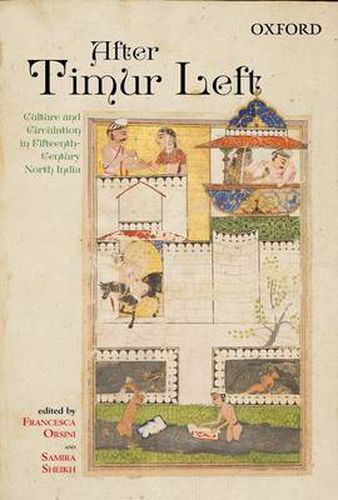Readings Newsletter
Become a Readings Member to make your shopping experience even easier.
Sign in or sign up for free!
You’re not far away from qualifying for FREE standard shipping within Australia
You’ve qualified for FREE standard shipping within Australia
The cart is loading…






Timur invaded northern India in 1398 but returned to Samarkand a year later. In 1555 the Timurid emperor Humayun came back to India after being forced into exile in Persia and re-established Mughal rule in northern India. Between these two significant dates stretches an era largely consigned to oblivion-the ‘long’ fifteenth century. The Mughal dynasty has long occupied a pre-eminent position in research on Indian history. It has also been credited with ushering in a radically new age of innovation in art, literature, and statecraft. But what of the period before the Mughals? With the empire-centred study of history privileging periods of political centralization, the multi-centred fifteenth century has remained relatively unexplored and undervalued. After Timur Left presents a path-breaking interdisciplinary set of writings on the politics, languages, religions, literatures, and arts of the fifteenth century. Together they reveal it to be a period of considerable political and social mobility, of cultural connectivity and consolidation, of innovation in literature and language choices, and of new forms of religious organization and expression.
$9.00 standard shipping within Australia
FREE standard shipping within Australia for orders over $100.00
Express & International shipping calculated at checkout
Timur invaded northern India in 1398 but returned to Samarkand a year later. In 1555 the Timurid emperor Humayun came back to India after being forced into exile in Persia and re-established Mughal rule in northern India. Between these two significant dates stretches an era largely consigned to oblivion-the ‘long’ fifteenth century. The Mughal dynasty has long occupied a pre-eminent position in research on Indian history. It has also been credited with ushering in a radically new age of innovation in art, literature, and statecraft. But what of the period before the Mughals? With the empire-centred study of history privileging periods of political centralization, the multi-centred fifteenth century has remained relatively unexplored and undervalued. After Timur Left presents a path-breaking interdisciplinary set of writings on the politics, languages, religions, literatures, and arts of the fifteenth century. Together they reveal it to be a period of considerable political and social mobility, of cultural connectivity and consolidation, of innovation in literature and language choices, and of new forms of religious organization and expression.